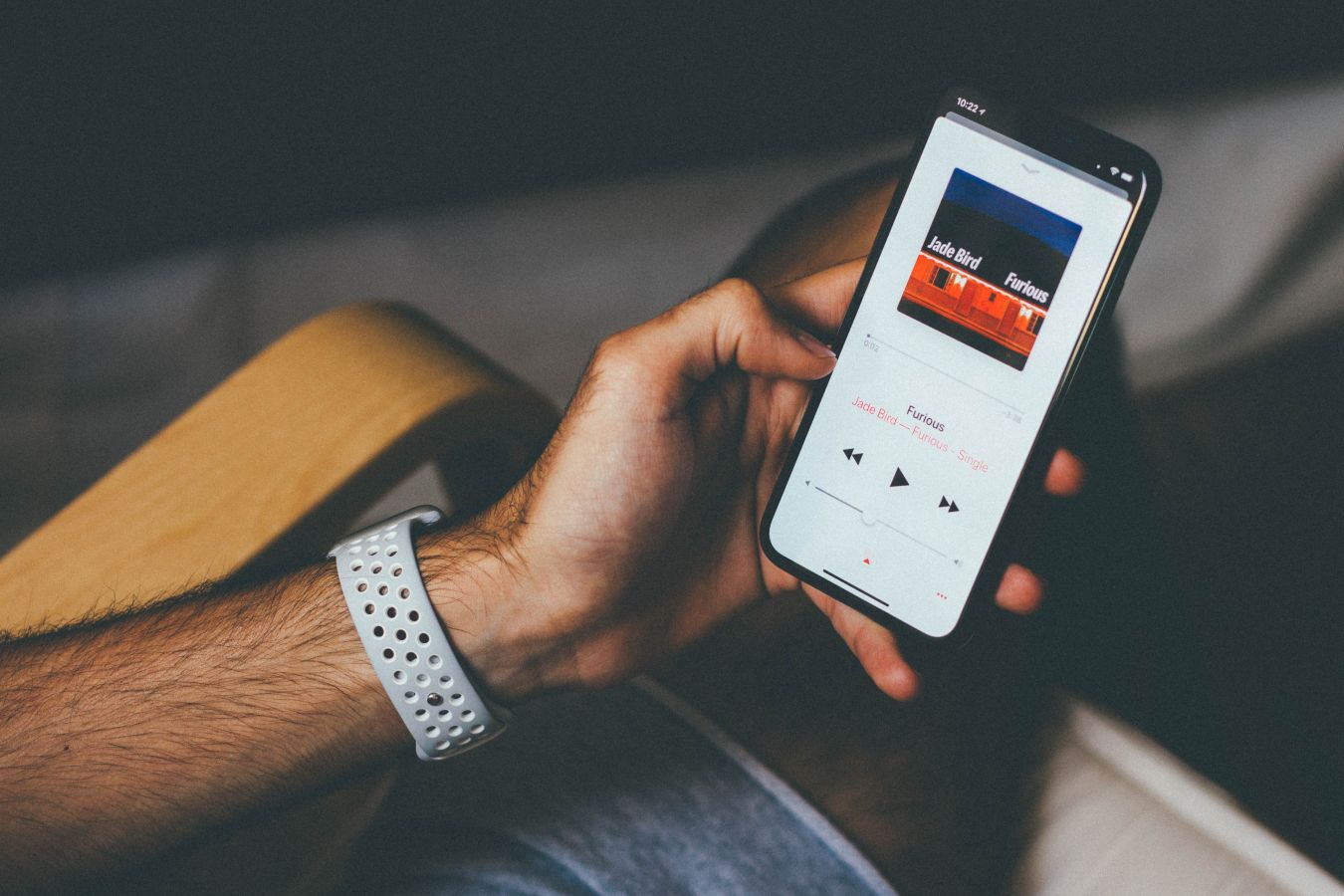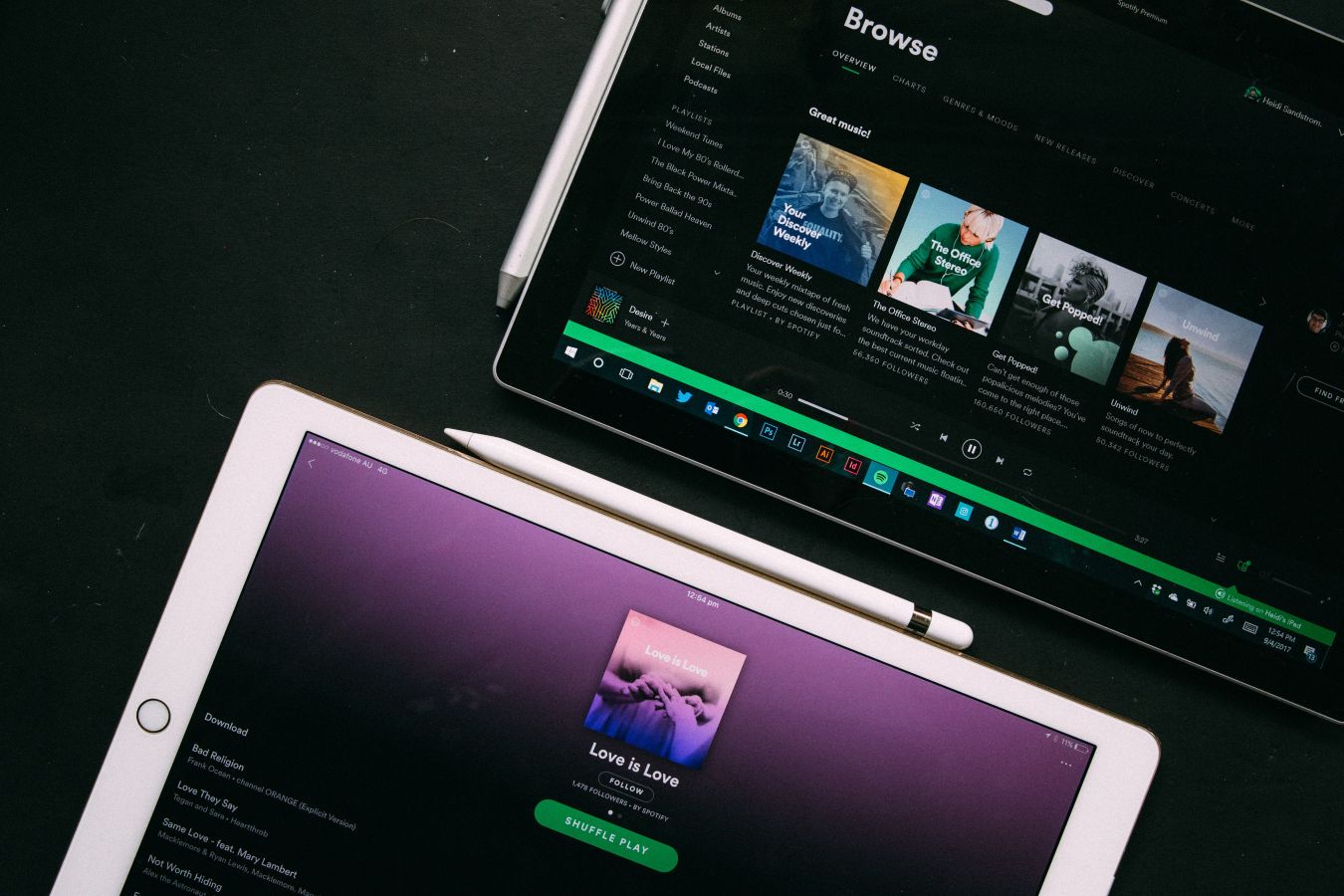Music distributors are middle-men who get music from an artist’s and label’s hands to digital service providers (commonly referred to as DSPs). While anyone can upload music to streaming platforms like YouTube or SoundCloud, sticking exclusively to those channels limits your reach and monetization options. If you’re an independent artist or starting a record label, and you plan to have your music on streaming platforms like Apple Music, Amazon, Spotify, etc., you’ll need to decide what music distributor to use. However, there are a lot of music distribution companies to choose from, how do you know if you’re getting the best music distributihon deal?
Two years ago, we interviewed the Symphonic Distribution founder, Jorge Brea. Our team has used Symphonic for many years because of their level of service, fair rates, and belief and support of the label; however, what works best for us won’t work best for you. There is no one-size-fits-all music distribution company that caters to every artist or label. In fact, some music distributors are better at specific types of releases and genres than others.
There are many variables to determine the right service. Ari’s Take did a deep dive into music distribution services. Rather than doing a deep dive, we will provide an overview on the best deals and services to consider before you decide who should distribute your next project. Learn key features to consider when selecting a Music Distributor for your next release.
Be sure to join our Gravitas Nation Discord server to learn more about music production tips & tricks, getting started in the music industry, and more.
Join Gravitas Nation Discord Server
Background on Digital Music Distribution
Do You Need to Distribute Your Music?
You may wonder, “Is my music ready for a distributor?” Some artists may not need to use a music distribution service yet. While it’s exciting to finish your new song, don’t feel pressured for a full digital music distribution. Perhaps it’s best to upload it to SoundCloud or Bandcamp and get feedback from other artists before using a music distribution service. There are a lot of ingredients that go into a release.
If you don’t have art that you think matches the music, maybe hold onto it for a bit. You can always release it as an EP or album in the future. Just because distribution services are available, doesn’t mean you have to use them if you’re not ready. If anything, waiting for the perfect song before fully distributing will make your debut single’s digital distribution much more exciting!
Music Distribution Hierarchy
There is a hierarchy of music distribution companies. Many consider The Orchard and InGrooves are the best music distribution services and top tier. They have their own deals with DSPs. Symphonic is more in the middle and utilizes Merlin’s deals with most of the major DSPs.
DistroKid, Tunecore, and CD Baby (which used to have a retail CDBaby store but has recently been shut down) are seen as lower-tier and self-serve. This doesn’t mean a lower-tier distributor isn’t ight for you though. However, if you’re a label, you probably wouldn’t use CD Baby opposed to mid-tier music distribution companies.

Best Music Distribution Deals and Services
Commissions versus Fees
Music distributors are a business and, as such, need to make money. Because of this, nearly every deal will have you forgo some income. There is rarely free distribution, and you will nearly never keep 100% of royalties. There are two common types of deal structures: commissions and fees. Usually, it will be one or the other, but some music distributors do both. Most music distributors take 15% of master royalties. Fees can be set up to be per year, per month, or per release.
If you’re in the early stages of your musical project and are not planning to release much, a commission may be the best bet. Although, you may not be able to land a distributor that takes a percentage. Tunecore, CD Baby, and DistroKid accept any artist, while the rest are generally application based. Some distributors have tiers, as well. While there are no fees per year, CD Baby pricing is $10 per single and $29 per album. The pricing goes higher if you want a physical CD or vinyl.
Streaming pays little. On Spotify, you need to earn 250 plays to see one dollar (.004 a stream x 250 streams = $1). While having your income reduced by 15% is a bummer, it ensures you don’t pay out of pocket for money you may not see back for months or years.
Full Distribution
Not every music distributor will distribute to all DSPs in every part of the world. For example, there are several that don’t distribute to Instagram Stories. If you have a strong Instagram presence, this could encourage you to not choose that music distributor. OneRPM doesn’t distribute to Asian markets, despite RouteNote distribution predicting the market will explode in a couple of years.
When Ari interviewed RouteNote, the founder / CEO noted the younger Chinese generation is strong. China’s population is the world’s largest, with India closely following, and cost of data is affordable. Because of phones, younger Chinese citizens in rural areas have opportunities to find music, which everyone pays to stream. When a huge population pays for music, it creates a ginormous boom in the music economy. Although hardly anyone in India pays for music, the population alone holds the potential for a solid source of income through royalties. Some artists can make a livable wage from royalties in these markets alone.
Africa has been growing in the streaming market. Recently, Apple expanded availability of its music streaming service to 17 more African countries, acknowledging a streaming revolution. Each year shows significant growth of streaming revenue, even though the average cost of data is nearly quadruple the price in America. Drivers towards this growth is increased usage of cell phones and the population of younger generations. The main roadblock preventing Africa from higher amounts of growth would be expensiveness. Streaming is considered a luxury, as opposed to the United States where it’s considered a basic offering.

Release Support and Marketing
Many music distribution services assist in the marketing, promotion, and playlist process. Symphonic has helped our music get featured placements on Junodownload and Beatport genre pages, and it typically pitches our music to Spotify editorials. While nothing is guaranteed and you should never bank on distribution companies alone for marketing purposes, it’s a nice boost in visibility. Additionally, Symphonic has a sync licensing division, Bodega Sync. This distribution service pitches music out to music supervisors and can help with publishing.
Trending Reports
Some music distribution companies will offer trending reports, although the cadence varies per company. Trending reports provide unofficial daily sales activity on streaming services like iTunes, Google Play, and Amazon Music. This can be beneficial to understand how music is doing in as close to real-time as possible. However, some music distributors have a reputation to not provide transparent or accurate reports.
Payment Splitting
If you release at a record label, you can usually ask them to pay out your collaborating artists directly. However, if your independent releases tend to feature collaborations, splitting royalties can become a pain. Some music distribution companies offer payment splitting (DistroKid, Octiive, Stem, Soundrop), where they pay collaborators directly on your behalf. Some music distribution companies require an extra fee or require the collaborator to create an account on their platform. These services can be worth the investment though.
It can take up a lot of time to determine the accounting for royalties you owe collaborating artists. Record labels have departments dedicated to royalties because it can be such a hassle. These payment splitting services may cost money, but it’s probably one of the best music distribution deals and services. It ensures collaborators are accurately paid, saves you time, and saves you potential legal issues if you’re not able to calculate royalties correctly. If you’re not interested, Gravitas uses Label Engine to calculate our royalties which is a great platform to check out. It also allows us to share royalty reports with artists.
Operations
Distributing music should be a simple process. Because of this, looking into the process of submitting music to your distributor is an important facet of a decision. Symphonic has a clean online portal, along with a help desk to submit tickets. Other distributors may not have a desktop site or any software. There are companies who will do everything over email or a phone app. You should identify how you like to do your workflow.
After you finish submitting music, the end of the road is not always clear. Sometimes the wrong masters are submitted. Maybe the music metadata has a typo. For these rarities, people should not be heavily penalized for this. There are certain music distributors out there who will charge a hefty takedown cost if a release needs to be fixed for whatever reason.
Things to Know for Digital Music Distribution
Digital Music Platforms that Distributors Don’t Cover
Have you ever seen YouTube videos songs with ” – Topic” following the channel’s name? Your music distribution service creates these videos. The artist does not own or claim the channels, it’s automatic. Similarly, music distribution services can do the same thing with SoundCloud. It can create a SoundCloud profile automatically and upload the song under your name, even though you don’t have access to the account. Most distribution services don’t do this to SoundCloud because most artists prefer to keep the track on their personal account, but it’s something to look out for.
One digital music platform that a music distribution service doesn’t reach is Bandcamp. Gravitas Recordings loves Bandcamp as a distribution platform for many reasons. Gravitas has always held a pay-what-you-want model. This means Bandcamp users can download all of our music for free and choose to donate. Usually, Bandcamp takes a 15% cut, but it’s still much more than what a Spotify stream will give. Spotify pays out $.004 per stream. Even if someone donates $1, that’s dozens more than a stream pays. Since the pandemic, Bandcamp does monthly Bandcamp Fridays, where artists keep 100% donations. You can get paid directly to PayPal fast.
Bandcamp lets artists sell merch and send community messages. Once a fan follows you on Bandcamp, they are added to a list to receive emails for every release or merch drop. If artists are touring, they can target specific followers by location. Artists can do fun things like customizing their Bandcamp page to make it more personalized.
Claiming a Spotify Artist Profile
There are some roadblocks that prevents tracks going to the correct profiles on platforms like Spotify. Maybe you have a common name. Maybe you don’t have an artist profile set up yet. To ensure your song gets to the appropriate profile, you’ll need to create a Spotify for Artists account and claim your profile. Afterwards, make sure your music distribution service knows to route the track to that profile. On Symphonic, we input artists’ Spotify and Apple Music links before submitting. This helps them know they’re sending the music to the correct profile.
If your music distribution service doesn’t ask for profiles and your music went to the wrong profile, don’t panic. There have been times when our artists will have music in the wrong profile. You can easily create a help ticket with the distributor and let them know the correct profile to transfer it to.
YouTube Monetization
There are several approaches to YouTube channels who use your music in their videos, whether it’s used in the background of a vlog or is the focus of the video. Some major record labels have the video taken down or blocked. Gravitas uses a setting where the video will get claimed, yet nothing bad happens to the channel. Instead, our digital music distribution company will collect royalties and pay the artist for views on the video. Although the video will get a copyright claim, it will not hurt the YouTube channel like a copy strike does. They just cannot get any money from it, the artist will.
If you want to get featured on a YouTube promotional channel like Trap Nation, Proximity, Mr. Suicide Sheep, etc., they will commonly ask you to waive monetization. This will only waive monetization for their video of your song, not your song entirely. In order to do this, you will have to create a ticket with your distributor to remove the claim from the video. Some channels will request you sign a digital agreement, too.
Some labels will whitelist a channel so they can upload their music unlimited amounts of time with no issues with copyright. Monstercat offers a gold subscription for $5 per month, where YouTubers, Twitch streamers, and Mixer users can keep 100% of the revenue claim-free.
Who Should You Pick?
Now you know the best music distribution deals and services. Whether it’s CD Baby, Tunecore, Symphonic, etc., each distribution service has pros and cons. Luckily, you have a lot of flexibility because you don’t have to 100% commit to one music distributor as artists or record labels. You can only use one distributor per release, but you can bounce around for different releases. Using several per year deals is not in your best interest though, make sure you’re not registered for multiple yearly fee renewals. It’s complicated to say what music distribution company to get because every situation is different. We hope this was a good starting point.
If you’re looking to learn more about developing your sound and growing your artist project:
12 Music Business Books to Read in 2020
Tips & Tricks on Sound Design & Mixing From Encanti
The Best YouTube Channels For Electronic Music Production Tutorials


What is your tak on UnitedMasters?
It’s great that you mentioned that I should check the rending reports of music distribution companies and ensure they’re providing transparent ones. My niece is looking for a music distribution company for her song that went viral in TikTok. I’ll share this article with her later to use it as a guide in finding the best music distributor. Thanks!